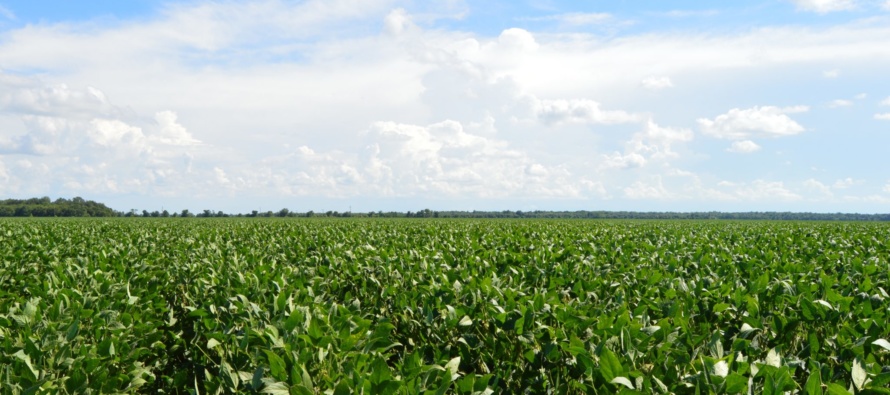Soybean Irrigation Termination

Related Articles
- 2010 Soybean And Corn Variety Trial Data 3
- 2010 Row Crop Short Course Video Links 0
- Identifying Wheat Growth Stages using the Feekes Scale 4
Latest Tweets
This growing season seems to be one where the decision for terminating irrigation in soybean may require consideration of factors that aren’t necessarily typical. Reasons for these additional considerations include the range in planting dates this season along with the in-season rainfall that many areas have experienced throughout much of the growing season. While some acres have finished without requiring irrigation at all, other acres have finished without requiring the number of irrigation events that are normally applied. An additional scenario is the later planted acres that may have required little to no irrigation, but as these soybean approach maturity, adequate moisture to finish may be required through irrigation if rainfall doesn’t occur during the critical pod filling time. Previous research suggests that a yield reduction will occur if soybean experience drought stress during the R5 (pod fill) stage, a result of decreased seed size due to lack of available soil moisture. Regardless of the situation, the goal is to make sure that adequate soil moisture is available to ensure that the soybean seeds reach maximum size.
The first step in deciding when to terminate irrigation, regardless of soybean planting date, is to properly identify what growth stage the crop is in. Keep in mind that if you are growing an indeterminate variety, observations for determining the growth stage should be taken from pods in the upper four nodes of the plant. In determinate varieties, observations can be taken anywhere on the plant.
The following points will help in identifying the late reproductive growth stages:
- R5.5 – Pods contain soybeans which fill half the space inside the pod cavity
- R6 – Soybeans completely fill the inside of the pod cavity
- R6.5 – Pod and pod wall beginning to change color. Soybeans inside the pod are separating from the protective membrane within the pod
- R7 – Pod mature in color
R6 Soybean Pod
R6.5 Soybean Pod
The expected time from R6 to R6.5 will vary, depending on planting date and maturity group. But, generally speaking, soybean will require 7 to 14 days to transition from R6 to R6.5. The later the planting date, the later the expected date at which the R6.5 growth stage is achieved so for some of our acres, we still have several days to go to be able to safely terminate irrigation. Be mindful of environmental and field conditions in later planted soybean to ensure that an irrigation event during the early Fall will not create extra challenges for harvest operations.
If the crop has reached the 6.5 growth stage, when the soybeans have begun to recede from the pod membrane, and adequate soil moisture is present, irrigation can be terminated at this point. In the case of indeterminate varieties, be mindful of the fact that there may be some pods in the lower part of the plant that are approaching R7 while pods in the upper four nodes still need water to finish filling. As previously mentioned, terminating irrigation too soon can result in smaller seed and therefore reduce the overall yield potential.
Soil moisture sensors are excellent tools to aid in the decision of when to terminate irrigation in soybean. Proper identification of the crops growth stage coupled with measurements recorded with a soil moisture sensor can provide the information needed to estimate the time until the crop reaches physiological maturity and the availability of soil moisture up to that point. For example, if the soybean crop is at the R6 growth stage a timely rainfall or well-timed irrigation event could allow that crop to reach physiological maturity.




Let me tell You a sad story ! There are no comments yet, but You can be first one to comment this article.
Write a comment